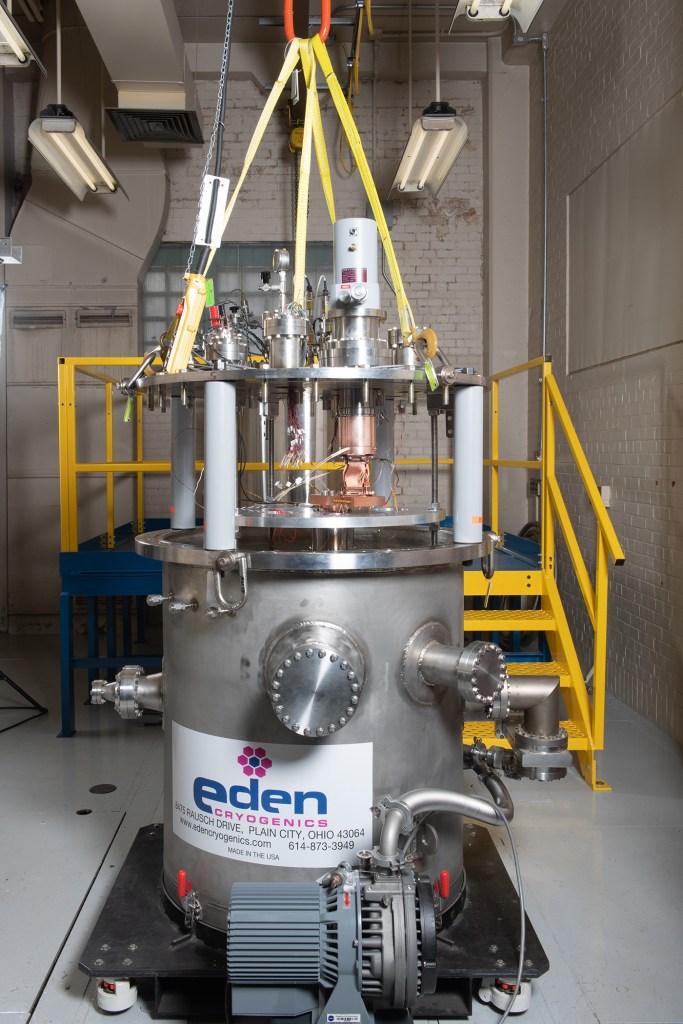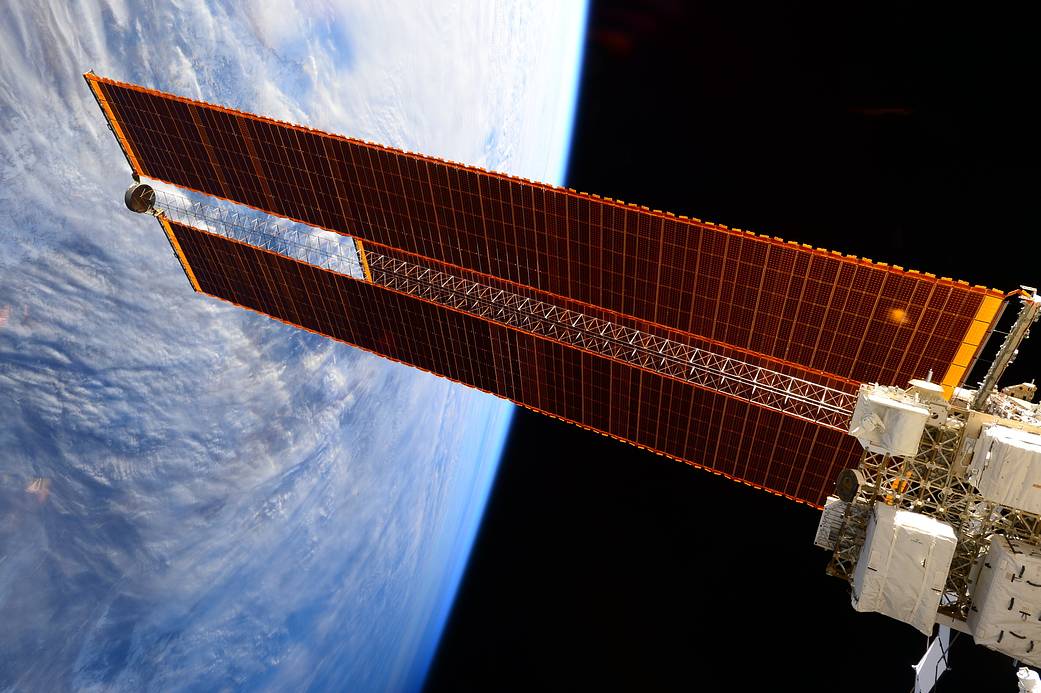Expedition 43 Flight Engineer Samantha Cristoforetti of the European Space Agency (ESA) photographed the giant solar arrays on the International Space Station on Feb. 12, 2015.
The space station’s solar arrays contain a total of 262,400 solar cells and cover an area of about 27,000 square feet (2,500 square meters) — more than half the area of a football field. A solar array’s wingspan of 240 feet (73 meters) is longer than a Boeing 777’s wingspan, which is 212 feet (65 meters). Altogether, the four sets of arrays can generate 84 to 120 kilowatts of electricity — enough to provide power to more than 40 homes. The solar arrays produce more power than the station needs at one time for station systems and experiments. When the station is in sunlight, about 60 percent of the electricity that the solar arrays generate is used to charge the station’s batteries. At times, some or all of the solar arrays are in the shadow of Earth or the shadow of part of the station. This means that those arrays are not collecting sunlight. The batteries power the station when it is not in the sun.
Image Credit: ESA/NASA



























